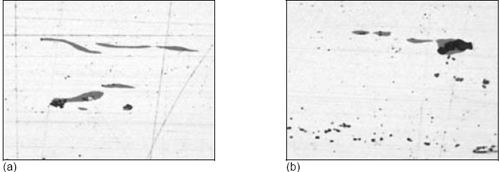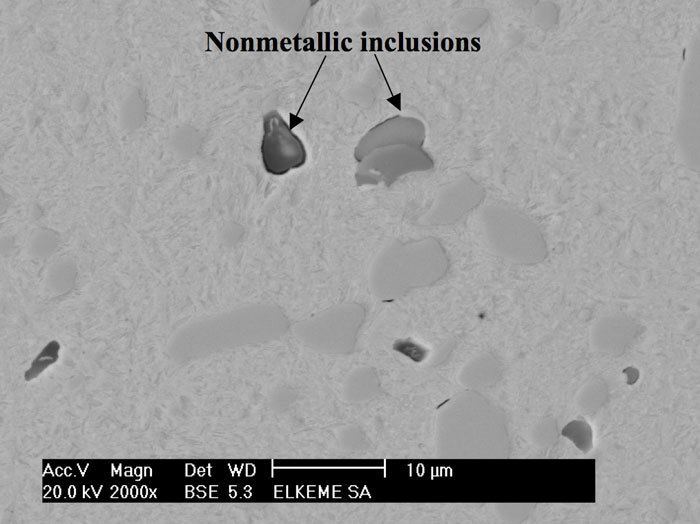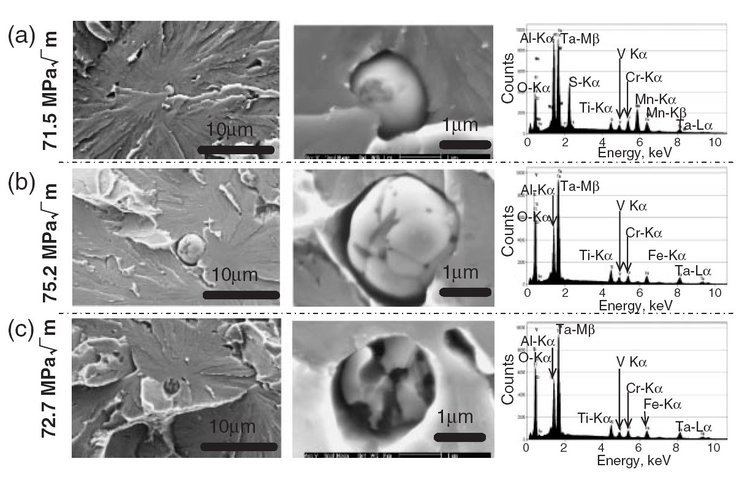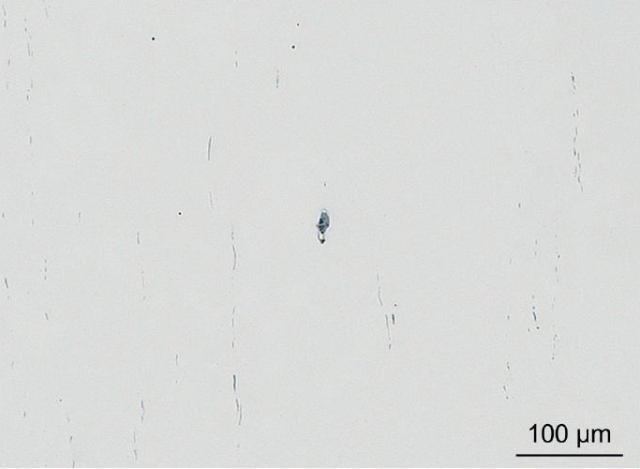 | ||
Similar Smelting , Forge , Stamping (metalworking) | ||
Olympus stream inclusion worst field analysis non metallic inclusions
Non-metallic inclusions are chemical compounds and nonmetals that are present in steel and alloys. They are the product of chemical reactions, physical effects, and contamination that occurs during the melting and pouring process. These inclusions are categorized by origin as either endogenous or exogenous. Endogenous inclusions, also known as indigenous, occur within the metal and are the result of chemical reactions. These products precipitate during cooling and are typically very small. Exogenous inclusions are caused by the entrapment of nonmetals. Their size varies greatly and their source can include slag, dross, flux residues, and pieces of the mold.
Contents
- Olympus stream inclusion worst field analysis non metallic inclusions
- Classification of non metallic inclusions
- Influence of non metallic inclusions to the properties of steel and alloys
- References

Classification of non-metallic inclusions

Non-metallic inclusions, the presence of which defines purity of steel, are classified by chemical and mineralogical content, by stability and by origin. By chemical content non-metallic inclusions are divided into the following groups:
- sulfides (simple — FeS, MnS, Al2S3, CaS, MgS, Zr2S3 and others; compound — FeS·FeO, MnS·MnO and others);

- nitrides (simple — ZrN, TiN, AlN, CeN and others; compound — Nb(C, N), V(c, N) and others), which can be found in alloyed steel and has strong nitride-generative elements in its content: titanium, aluminium, vanadium, cerium and others;
- silicates

- oxides (simple — FeO, MnO, Cr2O3, SiO2, Al2O3, TiO2 and others; compound — FeO·Fe2O3, FeO·Al2O3, FeO·Cr2O3, MgO·Al2O3, 2FeO·SiO2 and others;

The majority of inclusions in metals are oxides and sulfides since the content of phosphorus is very small. silicates are very detrimental to steels, especially if it has to undergo heat treatment at a later stage.
Usually nitrides are present in special steels that contain an element with a high affinity to nitrogen.
By mineralogical content, oxygen inclusions divide into the following main groups:

Ferrites, chromites and aluminates are in this group.

By stability, non-metallic inclusions are either stable or unstable. Unstable inclusions are those that dissolve in dilute acids (less than 10%concentration). Unstable inclusions are iron and manganese sulfides and also some free oxides.
Present-day levels of steel production allow to move off from the metal different inclusions. However in general the content of inclusions in different steels varies within wide limits and has a big influence on the metal properties.
Influence of non-metallic inclusions to the properties of steel and alloys
Present-day methods of steel and alloy production are unable to attain completely pure metal without any non-metallic inclusions. Inclusions are present in any steel to a greater or lesser extent according to the mixture and conditions of production. Usually the amount of non-metallic inclusions in steel is not higher than 0.1%. However, the number of inclusions in metal is very high because of their extremely small size.
Non-metallic inclusions in steel are foreign substances. They disrupt the homogeneity of structure, so their influence on the mechanical and other properties can be considerable. During deformation, which occurs from flatting, forging, and stamping, non-metallic inclusions can cause cracks and fatigue failure in steel.
When investigating the influence of non-metallic inclusions on the quality of steel, of great importance are the properties of these inclusions: size, shape, chemical and physical characteristics. All these properties depend on the chemical composition of steel, method of smelting and for certain steel grade. These properties can change within wide limits even within the same mode of production.
Different methods for analysis of non-metallic inclusions have been developed and are now in use. These make it possible to determine content, structure and amount of non-metallic inclusions in steel and alloys with high accuracy.
